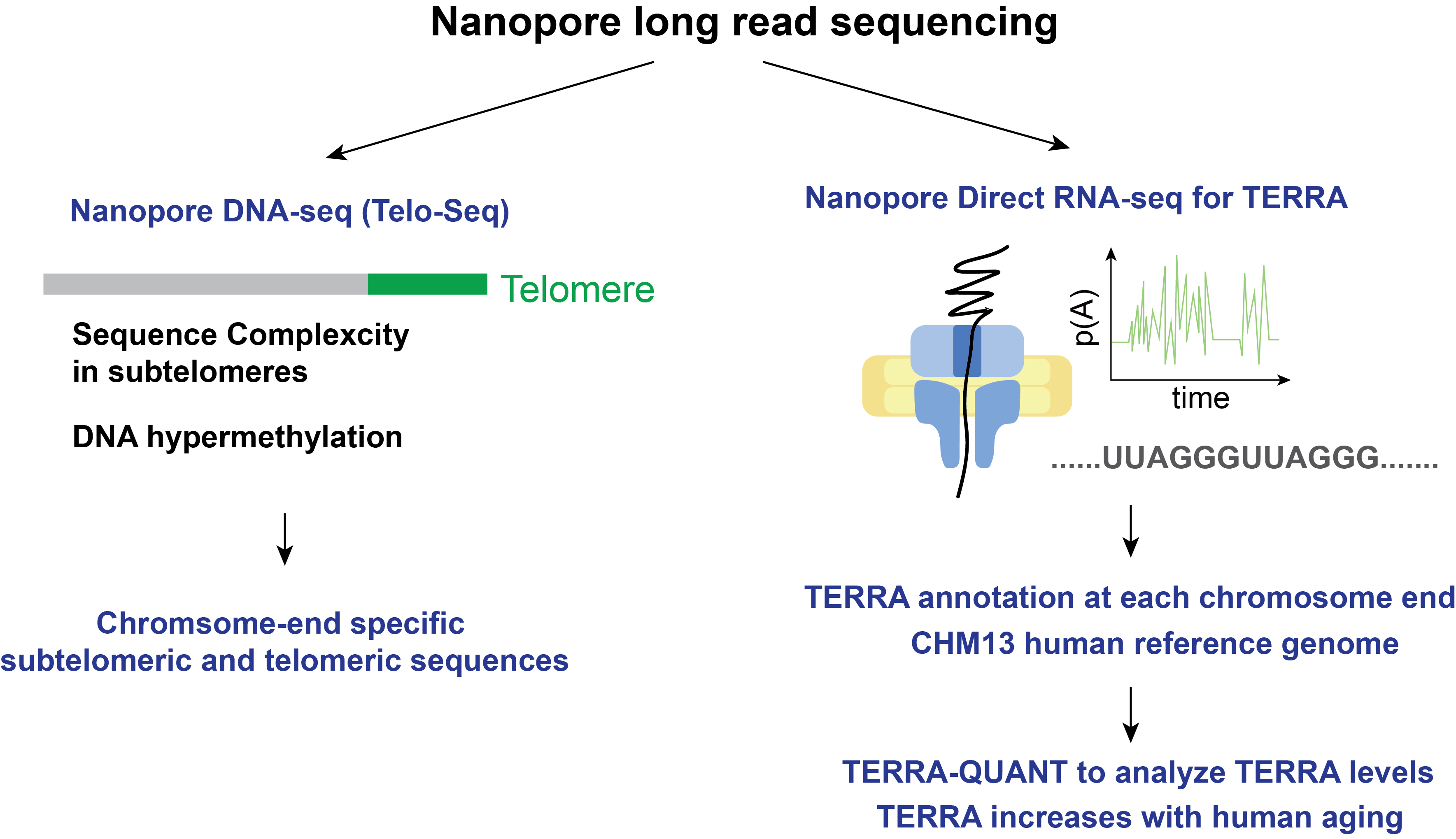利用長片段三代定序法解開染色體端粒3D空間的接觸圖鑑與DNA 甲基化模式
Decipher the contact map and DNA methylome of telomeres by long read sequencing
計畫主持人:臺大-分子與細胞生物學研究所 朱雪萍、植微所 陳柏仰
我們利用長片段定序的方法,解開人類端粒與次端粒序列所轉錄出來的非編碼RNA—TERRA, 我們對TERRA在人類基因體中做出註解,並建構了一套生物資訊分析套件以分析TERRA 表現量,並收集了人類各種組織中的轉錄體資料,針對從每條染色體的末端所轉錄出TERRA進行分析,發現此種非編碼RNA—TERRA 在老年人的細胞中會隨著年齡增加而上升,其表現量與老化息息相關,並且在阿茲海默的早期病人的腦內,TERRA 的表現量也會比正常人高,我們的研究解開了染色體末端所轉錄的RNA與人類老化與疾病的關係。
另外,對於個體間端粒的長度與次端粒序列上的DNA甲基化的程度、端粒3D結構的變化以及與TERRA 表現量之間調控的關係,將在之後延續的計畫中,依此計畫所得的初步試驗結果持續改良長片段定的技術與分析方法來進行研究。
Using Nanopore long-read sequencing, we decipher the non-coding RNA—TERRA transcribed from human telomeric and subtelomeric regions. We annotated TERRA in the human genome, developed a bioinformatics tool to analyze TERRA expression, and collected transcriptomic data from various human tissues. Analyzing TERRA transcribed from the ends of each chromosome, we discovered that this non-coding RNA—TERRA—shows increased expression in cells as individuals grow older, closely correlating with aging. Additionally, in the brains of early-stage Alzheimer's patients, TERRA expression is higher than in normal individuals. Our research reveals the link between RNA transcribed from chromosome ends and human aging and disease.
Additionally, the relationship between telomere length, the level of DNA methylation in subtelomeric sequences, changes in telomere 3D structure, and the regulation of TERRA expression will be investigated in follow-up studies. These studies will build on the preliminary findings from this project, with continuous improvements to long-read sequencing techniques and analytical methods.
